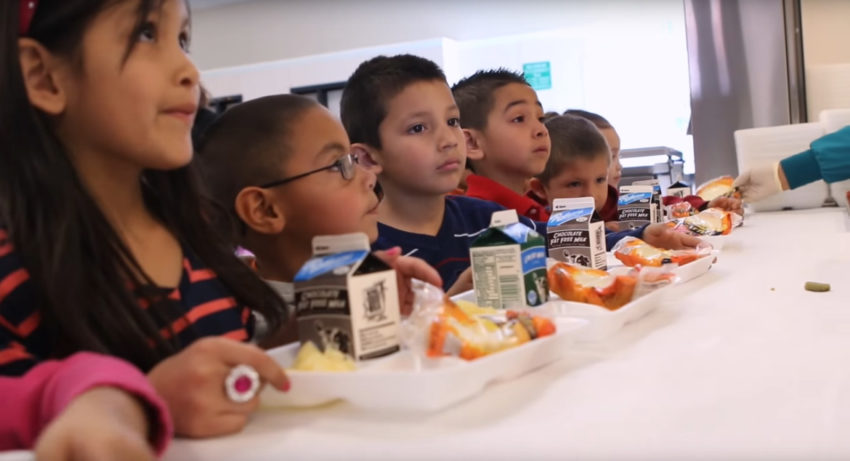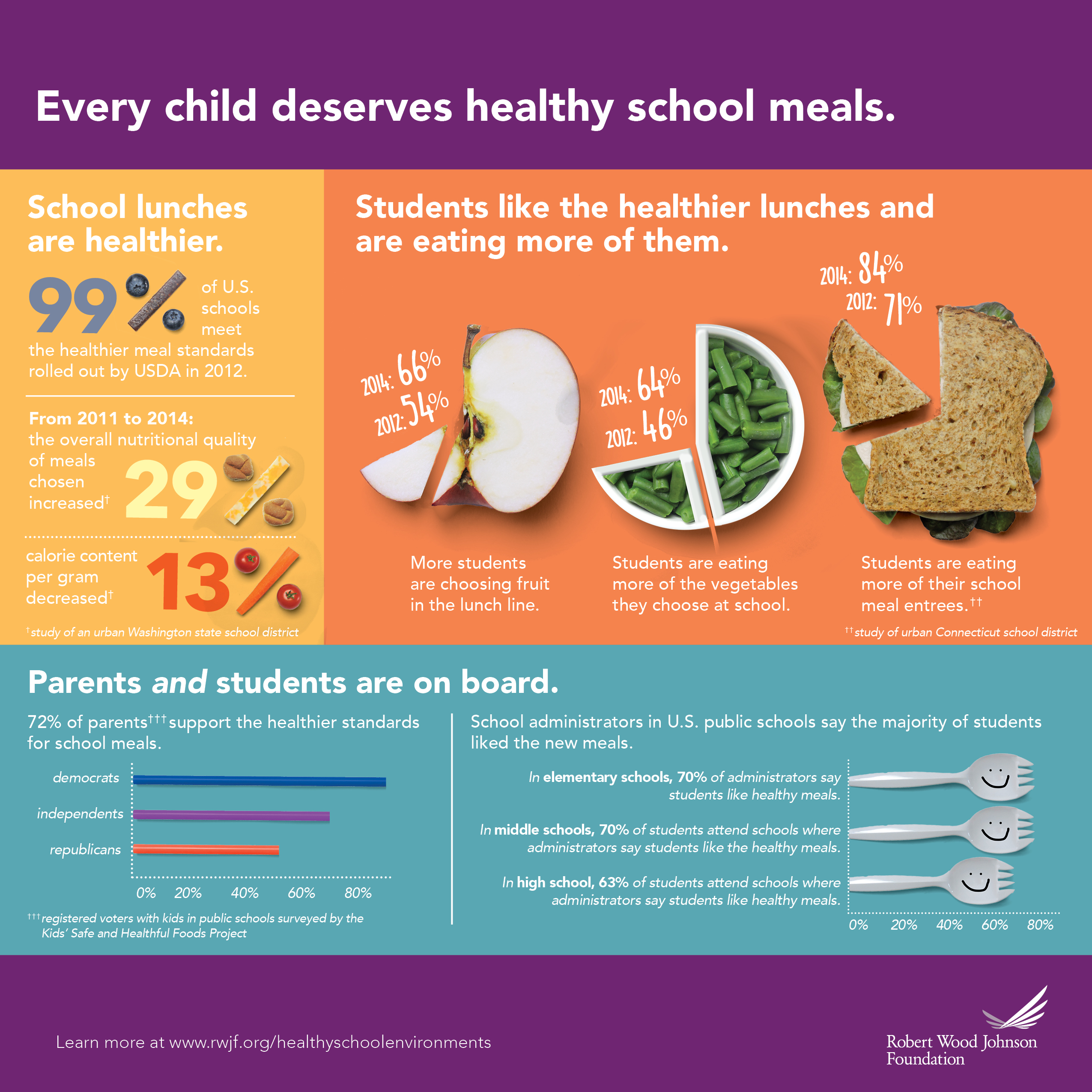
Share On Social!
Earlier in 2018, over 700 Salud America! members and thousands of others submitted public comments to oppose the USDA’s proposed measure that could weaken nutrition standards in schools.
Unfortunately, USDA approved its measure.
The new rules aim to give schools flexibility in achieving higher nutritional standards for milk, whole grains, and sodium, according to a USDA press release.
 Unfortunately, experts say that really means:
Unfortunately, experts say that really means:
- Schools in the national school lunch and breakfast programs will be allowed to serve flavored, low-fat milk, which is prohibited under existing standards.
- The requirement for the portion of grains that must qualify as whole-grain-rich will be relaxed.
- There will be a delay to meeting sodium reduction requirements, even though 9 out of 10 school aged kids already eat too much sodium.
What Health Experts Are Saying
Many of health organizations and advocacy groups have spoken out against the final rule.
The American Heart Association: “We hope all schools reject this regulation and continue their commitment to serve healthier foods on our kids’ plates. Many schools declared they would do just that when these changes were first announced late last year. With nearly 100 percent of the nation’s schools already complying with the school meal standards that were released in 2012, children across the country are clearly benefiting”
Center For Science In The Public Interest (CSPI): “The rule released today by the U.S. Department of Agriculture locks in dangerously high levels of salt and brings back more refined white flour to school meals. Nine out of ten children consume too much sodium which can raise blood pressure, increasing the risk of heart disease, stroke, and hypertension in adulthood. In fact, more than 1 in 7 U.S. youth aged 12–19 years had hypertension or elevated blood pressure in 2013–2016. Schools were on track to gradually rein in high sodium levels over ten years.”
Alliance For A Healthier Generation: “Although the United States Department of Agriculture (USDA) issued its final rule last week to roll back school nutrition standards, the Alliance for a Healthier Generation (Healthier Generation) will remain steadfast in its commitment to support and encourage schools across the country to strive for optimum levels of nutrition in all school meals and snacks. We encourage all schools, companies and community organizations with whom we have worked tirelessly over the past 12 years to continue to join us in achieving this bold goal of reducing child obesity and improving health outcomes. The recent USDA rule eliminates final sodium target, decreases the amount of whole grains, and allows 1 percent flavored milk in school meals.”
What You Can Do
Want to support healthier school meals?
Check out the Robert Wood Johnson Foundation’s healthy schools toolkit. There you will find graphics, sample social media posts, research, and stories to promote the importance of healthy school foods.
Also, the Center for Science in the Public Interest suggest using social media to contact Sonny Perdue, U.S. Secretary of Agriculture.
On Twitter
- 9 out of 10 kids eat too much salt, which is dangerous for their health. Yet @SecretarySonny @USDA has reversed progress, keeping high levels of salt in school meals.
- 1 out of 6 children has high blood pressure and salt reduction in schools can go a long way to set them up for good health. Yet @SecretarySonny @USDA plans to keep dangerously high levels of salt in school meals.
- @SecretarySonny @USDA plans allow too much salt in school meals and fewer whole grains: bad for kids’ health and undermines the progress that schools are making toward healthier meals.
- @SecretarySonny is allowing schools to provide fewer whole grains despite the fact that 85% of schools have not requested any waivers. If all schools in Alabama, Idaho, and Montana can serve whole grains to students, schools in other states can too.
On Facebook:
- @SecretarySonny @USDA are keeping dangerously high levels of salt in school meals, even though 9 out of 10 kids eat too much salt. USDA should be doubling down on helping schools continue to improve school lunches, not reversing progress.
- @SecretarySonny is allowing schools provide fewer whole grains, despite the fact that the vast majority of schools have not requested any waivers. This move reverses course for schools and good nutrition.
But you can do even more than that.
Check out our own action pack to help you add a Water Bottle Fountain to your school to give students all-day access to clean water!
Explore More:
Healthy FoodBy The Numbers
1
Supermarket
for every Latino neighborhood, compared to 3 for every non-Latino neighborhood



